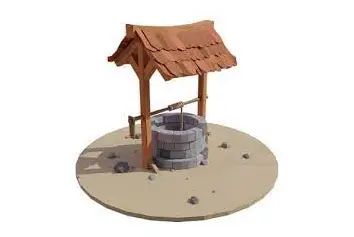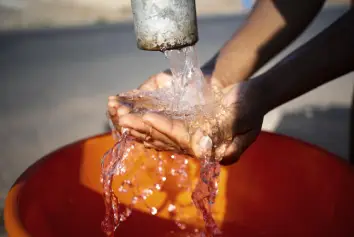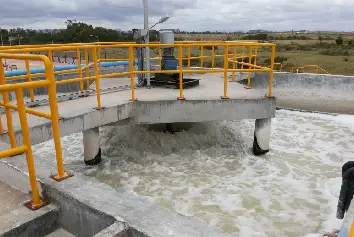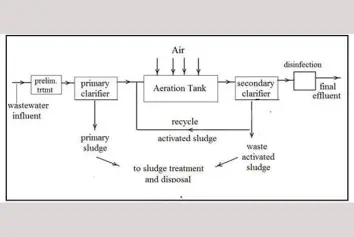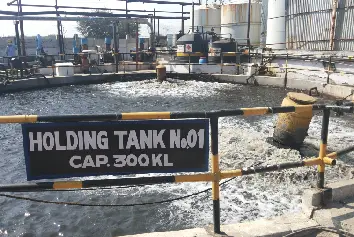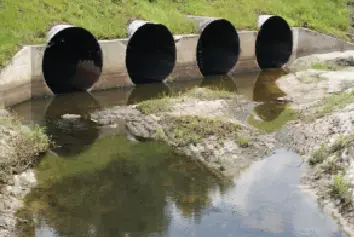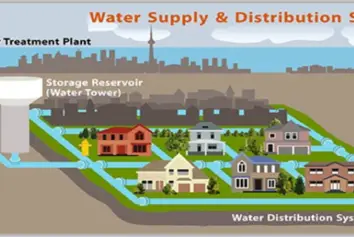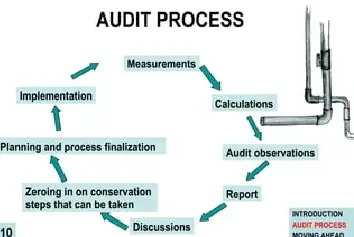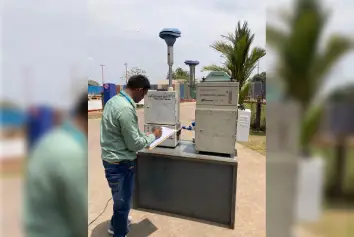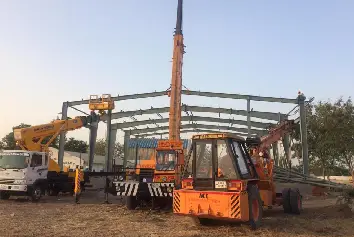Services
Our Services
Environment Clearance and NOC for existing & New setup
If you are planning to start a new project or expand an existing one, you need to obtain Environment Clearance (EC) and No Objection Certificate (NOC) from the concerned authorities. EC is a legal requirement that ensures that your project complies with the environmental norms and standards. NOC is a permission that certifies that your project does not pose any threat or harm to the environment or public health. Both EC and NOC are mandatory for any new or existing setup that falls under the purview of the Environment Impact Assessment (EIA) Notification, 2006.
Permission for the Ground water extraction from Borewell
To extract ground water from a borewell, you need to obtain permission from the concerned authority. The permission is granted based on the availability of ground water, the purpose of extraction, and the environmental impact of the borewell. You also need to follow certain guidelines and regulations for the construction and maintenance of the borewell.
Waste Water Collection, Conveyance, Treatment, Disposal, Recovery and Recycling
Wastewater is the water that has been used for various purposes such as domestic, industrial, agricultural, and stormwater runoff. Wastewater collection is the process of collecting wastewater from different sources and transporting it to a treatment facility. Wastewater conveyance is the system of pipes, pumps, and other devices that carry wastewater from the collection points to the treatment plant. Wastewater treatment is the process of removing contaminants from wastewater and producing effluent that meets certain standards for discharge or reuse. Wastewater disposal is the final step of wastewater management, which involves disposing of the treated effluent in a safe and environmentally sound manner. Wastewater recovery and recycling are the practices of reusing treated wastewater for beneficial purposes such as irrigation, industrial processes, Toilet Flushing, Floor cleaning or groundwater recharge.
Sewerage collection, conveyance, treatment and disposal scheme for Townships, Cities, Industrial Estates etc
A sewerage scheme is a system that collects, conveys, treats and disposes of wastewater from different sources such as townships, cities, industrial estates etc. The main components of a sewerage scheme are sewers, pumping stations, treatment plants and disposal facilities. A sewerage scheme aims to protect public health and the environment by preventing the contamination of water resources and land by untreated wastewater.
Operation of Water and waste water treatment plants.
Water and wastewater treatment plants are facilities that remove contaminants from water sources and produce clean water for various uses. The operation of these plants involves several processes, such as coagulation, Flocculation, Aeration, filtration, disinfection, and sludge treatment. These processes require specialized equipment, chemicals, and personnel to ensure the quality and safety of the treated water.
Design & Detailed Engineering works for water & waste water treatment plants
Design & Detailed Engineering works for water & wastewater treatment plants are essential for providing the detailed design scheme to be provided. It also involves the Site visit for data collection, GA and Structural drawings for individual tanks, Layout plan, Hydraulic flow diagram, P&ID diagram, Piping layout, Detailed specifications for the Mechanical equipments. It involves the Budgetary quotes for entire plant including the Civil works. It also involves the BOQ for the Piping & electrical works. All the above will be provided in the detailed report.
Treat ability Studies for the water & waste water treatment plants
Treat ability studies are tests that evaluate the feasibility and effectiveness of different technologies for treating wastewater from various sources. They help to select the best treatment option for a specific wastewater stream, considering factors such as contaminant removal, cost, reliability, and environmental impact. Treat ability studies can be performed at different scales, ranging from laboratory bench-scale to pilot-scale or full-scale. Some of the common technologies that can be tested in treat ability studies include biological processes, physical processes, chemical processes, or a combination of them.
Construction Management of Projects from Concept to Commissioning.
Construction management is the process of planning, coordinating and overseeing the execution of a project from its initial concept to its final commissioning. Construction managers are responsible for ensuring that the project meets the client's requirements, budget and schedule, as well as complying with safety, quality and environmental standards.
Modification, Upgradation of existing Waste water Treatment plants.
Modification and upgradation of existing wastewater treatment plants are essential to improve their performance and efficiency. Wastewater treatment plants are designed to remove pollutants and contaminants from wastewater before discharging it into the environment. However, over time, these plants may face challenges such as aging infrastructure, increased demand, stricter regulations, or emerging pollutants. Therefore, modification and upgradation of existing wastewater treatment plants can help to enhance their capacity, reliability, quality, and sustainability.
Supply & Installation of the Mechanical, Electrical, Instrumentation & Piping works for the existing plants
We offer a comprehensive service for the supply and installation of the mechanical, electrical, instrumentation and piping works for the existing plants. We have the expertise and experience to handle any project, from design to commissioning. Whether you need to upgrade, expand or maintain your plant, we can provide you with the best solution for your needs.
Storm Water Disposal Systems.
Storm water disposal systems are designed to collect and drain excess rainwater from urban areas to prevent flooding and pollution. There are different types of storm water disposal systems, such as piped systems, inter-allotment drainage, absorption systems and stormwater harvesting systems. Each system has its own advantages and disadvantages depending on the site conditions, environmental impacts and costs. Storm water disposal systems require proper planning, design, construction and maintenance to ensure their efficiency and sustainability.
Rain water Harvesting system.
Rainwater harvesting system is a technology that collects and stores rainwater for human use. It can reduce the demand for potable water and prevent urban flooding. Rainwater harvesting system can be simple or complex, depending on the needs and preferences of the users. Some examples of rainwater harvesting system are rain barrels, rooftop catchments, and surface runoff harvesting.
Water Supply Distribution Systems
Water Supply Distribution Systems are the infrastructure that carries potable water from a treatment plant or a well to the consumers. They consist of pipes, pumps, storage facilities, and other accessories that ensure adequate water quality and quantity for residential, commercial, industrial, and fire fighting needs. Water Supply Distribution Systems can be classified into different types based on their layout, such as tree-like, looped, or grid networks.
Architectural & Structure design of Industrial Buildings and Townships.
Architectural and structural design is a crucial aspect of industrial buildings and townships. It involves planning, creating and implementing solutions that meet the functional, aesthetic and safety requirements of these structures. Architectural and structural design also considers factors such as environmental impact, cost-effectiveness and sustainability.
Water Audit and water balance diagram
A water audit is a systematic process of measuring and analysing the water use and losses in a facility or a system. A water balance diagram is a graphical representation of the water audit results, showing the inputs and outputs of water in different components or stages. A water balance diagram can help identify the sources and causes of water losses, such as leaks, overflows, or inefficiencies, and provide opportunities for water conservation and reuse.
Work place monitoring and Environment Monitoring like Air, Water, Noise etc.
Analysis of water and wastewater is a process of measuring the biological, chemical and physical attributes of water samples to determine their quality and suitability for various purposes. Water analysis can be performed using standard methods that are published by authoritative organizations such as the American Public Health Association, the American Water Works Association and the Water Environment Federation. These methods provide guidance for choosing among available methods for specific elements and compounds. Water analysis can be used for monitoring natural waters, water supplies and wastewaters, as well as for developing and evaluating new methods and technologies for water treatment and reuse.
Due Diligence phase 1 & 2 Projects.
Due diligence is a process of verifying the facts and assessing the risks of a potential investment or business deal. It usually involves two phases: phase 1 and phase 2. Phase 1 is a preliminary review of the target company's financial, legal, and operational aspects. Phase 2 is a more detailed and comprehensive analysis of the target company's assets, liabilities, contracts, and performance. The purpose of due diligence is to identify any red flags or issues that may affect the valuation or feasibility of the transaction.
Civil Construction works.
Civil Construction works are the activities involved in building or renovating structures such as roads, bridges, dams, tunnels, buildings, etc. Civil Construction works require planning, design, engineering, materials, equipment, labor, and management. Civil Construction works can have different purposes and goals, such as improving transportation, providing utilities, enhancing safety, creating public spaces, or preserving heritage.
Noise Monitoring & Modelling as per NABET scheme.
Noise Monitoring & Modelling as per NABET scheme is a process of measuring and predicting the noise levels in different areas and scenarios. The National Accreditation Board for Education and Training (NABET) scheme is a quality assurance system that certifies the competence and reliability of noise consultants and laboratories. The scheme aims to ensure that noise monitoring and modelling is done in a scientific and standardized manner, following the guidelines and regulations of the Ministry of Environment, Forest and Climate Change (MoEFCC).
Get In Touch
SF10 Charbhuja Complex,
Water Tank Road,
Kareliboug,
Vadodara - 390018, Gujarat
shivengineering5600@gmail.com
soham@shivengineering.net.in
+919054466815 /+919898866815
Quick Links
© Copyright © ShivEngineering 2023. All Rights Reserved | Website Design & Hosted by SYSMIC

